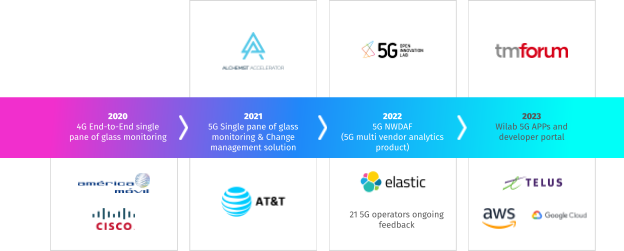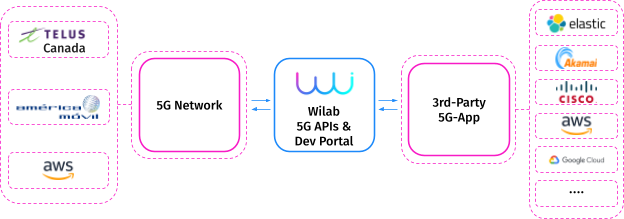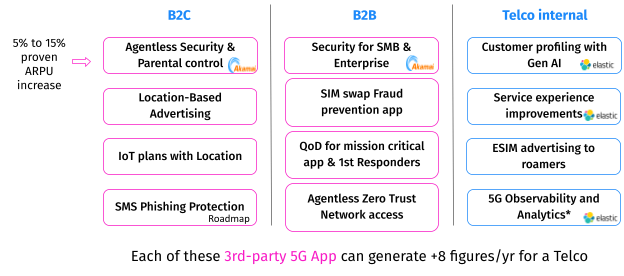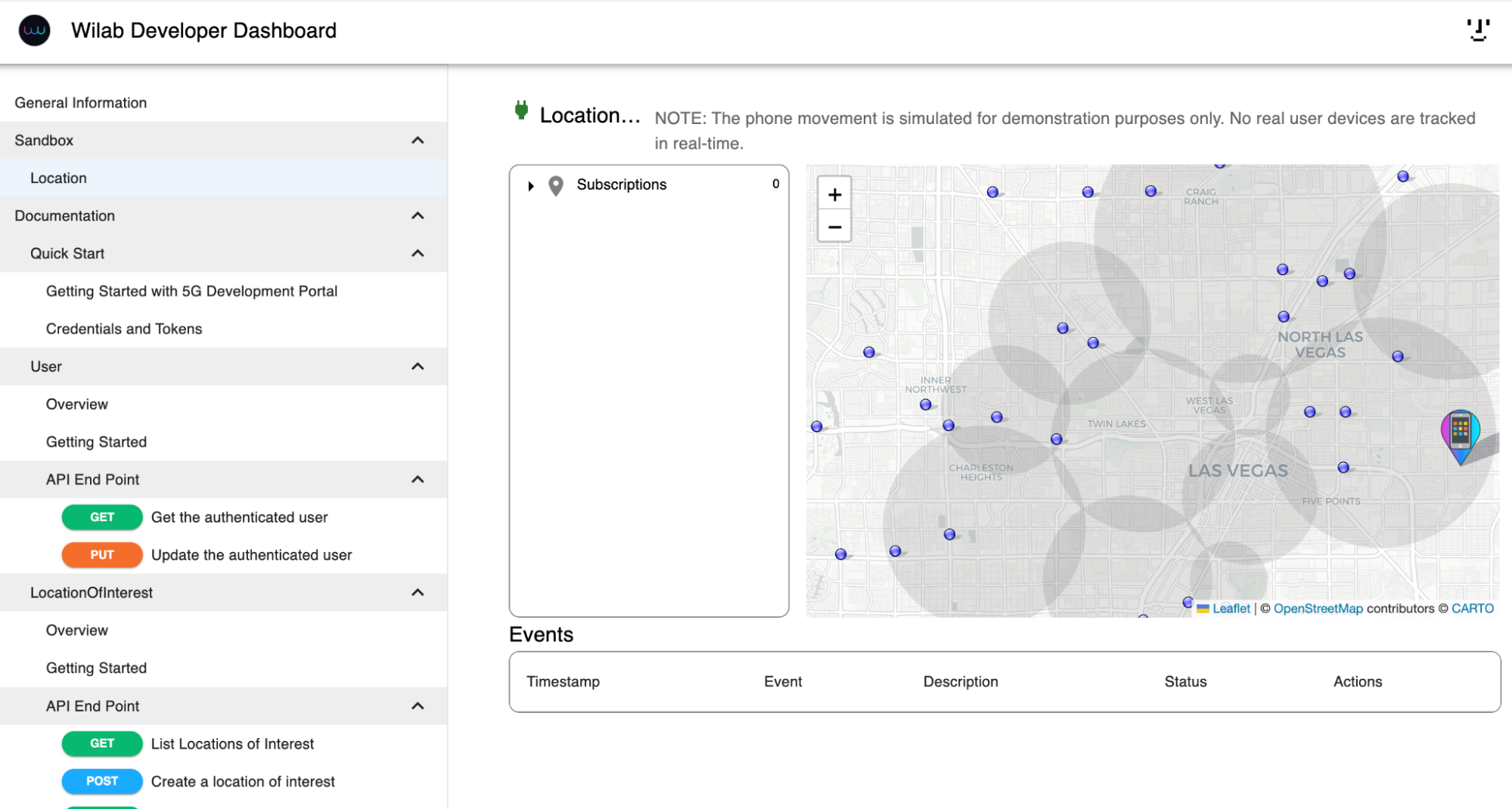Telco as a Service (TaaS) with Elastic and Wilab

Telco as a Service (TaaS) is poised to revolutionize the telecom industry by enabling operators to dynamically create and offer applications using open network capabilities and data. This model mirrors the successful approach of digital app stores like Apple's App Store but with a new universe of data that comes from the telecom ecosystem. By leveraging TaaS, telecom operators can rapidly develop and deploy new services and applications, tapping into a wealth of network data and capabilities. This not only fosters innovation but also enables telecom companies to respond swiftly to market demands and technological advancements. The result is a more agile, customer-centric approach, transforming telecom operators into platforms for a myriad of digital services, akin to the transformative impact of app stores in the smartphone era.
This shift from infrastructure-centric to service-oriented operations promises significant benefits for both telecom operators and their customers, heralding a new era of telecom business models. However, setting industry standards is also critical in TaaS to ensure interoperability, security, and efficiency in telecom services, thus guiding the development and deployment of TaaS solutions, ensuring they are robust, scalable, and capable of meeting the dynamic needs of modern telecommunication networks.
Into this new landscape, two technology partners, Wilab and Elastic®, are collaborating to set new benchmarks in the TaaS arena. Wilab, with its deep expertise into 5G network data analytics, aims to simplify and democratize the complexities of 5G technology for telecom operators. Meanwhile, Elastic, known for its data analysis prowess, brings scalable and AI-driven solutions that promise to optimize network performance and reliability like never before.
Wilab: Pioneering the future of telecommunications
Wilab is carving a niche in the telecommunications sector as a key innovator in 5G network data analytics. Its mission revolves around redefining the way telecom operators utilize the capabilities of 5G technology. Guided by a leadership team with extensive experience in electrical and telecommunications engineering, including figures like Tomas Achaval and Martin Ferreyra, Wilab champions an innovative and technically adept approach. Their collective experience and insight into the telecommunications domain play a pivotal role in the company's aspiration to streamline 5G operations. This ambition aims to render next-generation networks more user-friendly and efficient, thus democratizing access to cutting-edge 5G network technologies for telecom operators
In essence, Wilab's journey in the telecom landscape is marked by its dedication to simplifying complex 5G network functionalities and making them more accessible and manageable for telecom service providers. This effort is in line with the broader industry trend of making advanced telecommunications technologies more universally available and practical for diverse applications and services.

Elastic: The backbone of modern telco
In the telecom industry, Elastic stands out for its data analysis capabilities, which are integral to managing the complex data structures of modern networks. Elastic's synergy with telecommunications is evident in its ability to provide scalable and resilient network infrastructures. Its tools help telecom companies process and analyze data effectively, enabling them to optimize network performance and customer experience. Elastic is making significant strides with its integration of generative AI into the Elastic Stack. The addition of generative AI enhances this capability, allowing for predictive maintenance and real-time network adjustments, which significantly improve network reliability and reduce operational downtime. This synergy is transforming the way telecom companies interact with data, making it a dynamic tool for personalized and efficient decision-making and problem-solving.
[Related article: Harnessing the power of generative AI in telecom with Elastic Stack]
The role of CAMARA API in TaaS solutions
CAMARA, the Telco Global API Alliance, is a collaborative effort led by the GSMA, 34 telco groups, and the Linux Foundation to establish a unified set of APIs for the telecommunications industry. Its objective is to streamline and simplify the way telecom services are developed and delivered by creating a common framework for API development. This initiative aims to foster innovation, interoperability, and efficiency in the telecom sector by providing standardized APIs, making it easier for developers to create and deploy telecom-related applications and services globally.
One of the challenges is how to feed these APIs from the network. With Wilab and Elastic, telcos have an end-to-end solution to implement it, as well as complementary APIs and out-of-the-box monetization and observability use cases.
Wilab's approach to Telco as a Service
Wilab's strategy in TaaS focuses on making 5G technology accessible to all developers. By providing tools and platforms that simplify 5G integration, Wilab empowers developers to innovate without needing deep telecom knowledge. This approach democratizes 5G technology, allowing for a wider range of innovative applications and services.
The real breakthrough lies in how Wilab simplifies the complexities of interacting with the network of any vendor with a solution built using standard Network Functions and APPIs to collect data, provision business rules, and expose data, and there is even a 5G developer portal to simplify the building of apps. This results in an end-to-end solution that offers seamless API integrations for effortless application development and a developer portal, complete with a sandbox environment.

Real-world applications: Transforming industries with TaaS
The Wilab and Telco as a Service (TaaS) approach opens up a broad spectrum of applications, changing how telecom operators approach service delivery. These applications can be to improve operational efficiency and enable new products to be sold to end customers and the enterprise today.
What is more, TaaS enables the development of sophisticated security and parental control features, ensuring digital communication safety. In the automotive sector, TaaS is pivotal for connected car technologies, providing real-time data processing and enhanced connectivity. Additionally, TaaS facilitates the creation of location-based services, allowing for more targeted marketing strategies and enriched customer experiences.



Staying ahead of the changing telco landscape
Telco as a Service (TaaS) is transforming the telecommunications industry by enabling flexible, scalable, and efficient service delivery. It opens up new revenue today, as well as a realm of possibilities for telecom operators, from advanced security and parental control to innovative connected car technologies and targeted location-based services. This evolution toward a more service-oriented approach is guided by key industry standards, ensuring interoperability and security.
To stay ahead in this rapidly changing landscape, telecom operators must embrace these new technologies and frameworks. For those interested in exploring the full potential of TaaS, delve into the specific applications and case studies provided, and consider how these innovative solutions can be integrated into your operations to enhance service offerings and customer experiences.
If you are interested in learning more, please request an Elastic team meeting.
The release and timing of any features or functionality described in this post remain at Elastic's sole discretion. Any features or functionality not currently available may not be delivered on time or at all.

